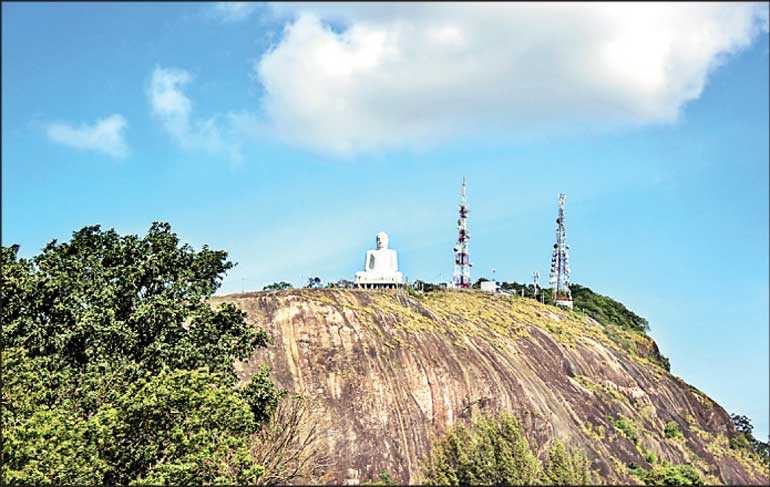Tuesday Dec 30, 2025
Tuesday Dec 30, 2025
Saturday, 1 August 2020 00:00 - - {{hitsCtrl.values.hits}}

Elephant Rock in Kurunegala
By D.C. Ranatunga
Kurunegala, the capital of North Western Province (NWP), is in the news following the demolishing of a building believed to be around 700 years old.
Not much is spoken of Kurunegala as the one-time capital in the 14th century from where at least four kings had ruled, after rulers from Polonnaruwa. Each king had ruled for short periods – Bhuvanekabahu II (1303-05), his son Panditha Parakramabahu IV (1305), Bhuvanekakebahu III (exact period not known) and Vijayabahu V (1332-44).
After Kurunegala (also referred to as ‘Hasti Shailapuraya’) at least five kings had ruled from Gampola before Kotte became the capital in 1415.
Though in recent times not much has been written about the history of Kurunegala, Henry W. Cave has devoted over a page in ‘Ceylon along the Train Track’ (1910). The population then in Kurunegala had been around 7,000 as against over 30,500 today.
It was also known as a ‘malaria area,’ described by Cave thus: “…Kurunegala was not many years ago dreaded for its own special type of malarial fever that almost always attacked the newcomer and which greatly distressed the natives during the dry weather immediately following on the rains, when vegetation rotted in the swamps. Now that so much of the country has been cleared of its rank vegetation for cultivation great improvement is manifest, and it is hoped that in course of time Kurunegala fever will be unknown.”
Just as he predicted, it is no longer talked about as a malaria area. In fact, malaria is hardly being talked about today anywhere in the country.
Discussing the notable features of Kurunegala, Cave wrote: “The natural features of Kurunegala are extremely picturesque, and possess some characteristics that are peculiar. Behind the town there stretches for some miles a series of enormous rocks rising to upwards of 800 feet from the plain. They are eight in number, and six of them bear distinctive names of animals which their curious shapes have been supposed to represent. These are the Elephant, Tortoise, Beetle, Eel, Goat and Crocodile. There are also two others known as the Gonigala or Sack Rock, and the Yakdessagala or She-demon’s Curse; the latter rising to 1,712 feet above sea level.
“The rocks doubtless influence in some degree the temperature of the air at Kurunegala; but less than is generally supposed. The heat is very much the same the same as at Colombo, averaging 80 degrees Fahr. The most interesting of the rocks may be climbed, and the reward is commensurate with the effort demanded, the surrounding country exhibiting its tropical flora to better advantage than when seen from the greater heights. On the Tortoise Rock (Ibbagala), which is approached from the Kachcheri within the town, there is an interesting temple situated beneath an overhanging ledge; a portion of the rock does duty as the roof and is gorgeously painted with the Buddhist conventional portraits, flowers, and various other designs. The temple contains a large number of images of the Buddha and his disciples. In the precincts are a dagaba and the copy of the impression of Buddha’s footprint upon Adam’s Peak
“The Elephant Rock (Etagala), which adjoins the Tortoise, is the favourite resort of visitors and residents alike. It affords delightful views of the town, the lake and the more distant country.”